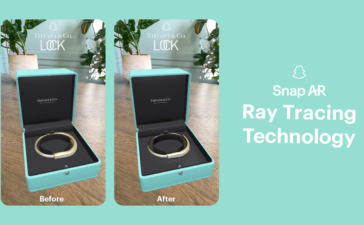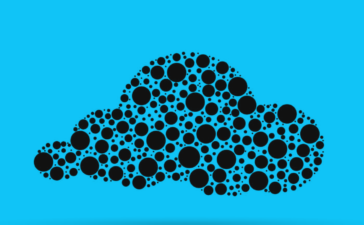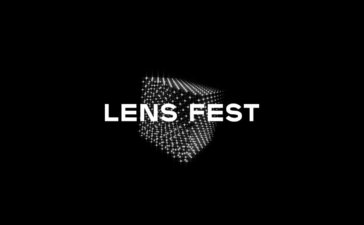Snap Partner Summit 2023 Details Changes Coming to Snapchat and Beyond
Snap’s annual Partner Summit is the company’s opportunity to showcase its working relationship with other brands. That includes the experiences that come out of those partnerships, as well as the hardware and software updates that drive them. The event covered a lot of ground but we’ll be looking specifically at AR-related updates and announcements.
Some of the announcements are already available for Snapchatters to explore, while others are coming soon. Even the parts of the summit that may seem boring for the average end users help to understand where the platform is going in the coming months and years. And this year’s event is extra special because it was held in person for the first time since 2019.
Snap Map and Bitmoji Features
Bitmojis, the 3D avatars used by Snapchatters for their profiles as well as in games and messages, is constantly expanding, including through new virtual fashion partnerships and this year is no different.
Digital fashions inspired by the Marvel Cinematic universe will be available soon. The avatar system itself will also be updating to allow for “realistic dimensions, shading, and lighting,” according to Vice President of Product Jack Brody.
“Bitmoji style has changed quite a bit, and they continue to evolve,” said Brody.

Brody also announced that the Snap Map is getting more updates, including more 3D locations and tags to help users find popular locations from their Snapchat communities. Users who access the app with Verizon +Play will also be getting new options for games and puzzles in calls with Snapchat’s connected lenses.
Camera Kit Integrations
Snap’s Head of Global AR Product Strategy and Product Marketing Carolina Arguelles Navas took to the stage to talk about recent and upcoming partnerships, including some that affect apps and experiences outside of Snapchat itself through its Camera Kit offering.
For example, Snap lenses can now be used in Microsoft Teams and in the NFL app. LA Rams’ SoFi Stadium even uses Snap Lenses on their Infinity Screen to show the audience with augmented reality effects.
Navas also discussed Snap’s ongoing partnership with Live Nation, bringing custom AR lenses to over a dozen concerts this year including Lollapalooza in Paris and The Governor’s Ball in New York. She also announced a new partnership with Disguise, a company that specializes in real-time interactive visuals for live events.
Snap is also partnering with individual artists. The first to be announced is KYGO, a DJ, with more artist partnerships to be announced throughout the year.
More Opportunities for Brands
Until now, Camera Kit has been the main way that other companies were able to use Snap’s technology. However, Jill Popelka announced a new division, Augmented Reality Enterprise Services (ARES), of which she is the head.

“We all know the shopping experience today, whether online or in-store, presents a lot of options,” said Popelka. “We’ve already seen how our AR advancements can benefit shoppers and partners.”
The “AR-as-a-Service” model currently consists of two main offerings. Shopping Suite brings together Snap’s virtual try-on and sizing recommendation solutions, while the Enterprise Manager helps companies keep track of their activations including through analytics.
Popelka also announced a new “Live Garment” feature that generates a wearable 3D garment from a 2D photo of a garment uploaded into a lens.
Commercial Hardware
Popelka also introduced two new hardware offerings from Snap to commercial partners – AR mirrors and AR-enabled vending machine.
AR mirrors are already making their way into clothing stores to make virtual try-on even easier for shoppers, including those who don’t have Snapchat. Some partners have even experimented with incorporating AR games that shoppers can play to unlock in-store rewards. Retailers are also using the opportunity specifically to engage with younger audiences.

Snap currently has its AR mirror in a Men’s Wearhouse store.
“[Men’s Wearhouse is] proud to launch digital partnerships and store innovations specifically geared toward how high school students want to shop and prepare for prom,” Tailored Brands President John Tighe said in a release shared with ARPost. “We are excited to offer these younger customers experiences in-store and online to make the shopping experience easier. Everyone deserves to look and feel their best on prom night.”
Snap also partnered with Coca-Cola to create a prototype of an AR vending machine controlled with hand gestures displayed on a screen.

It might be a while before you see either of these devices in a store near you, but keep an eye out all the same.
App Updates
The standard app is getting some AR updates too, mainly related to the company’s work with AI. When Snapchatters capture a photo or video, the app will recommend lenses that might match the scene. AI will also recommend lenses for reacting to Snapchat memories and produce a new generation of lenses available to users.
Keep Exploring Snapchat
There really was a lot in the Partner Summit that wasn’t detailed here. So, if you use Snapchat for more than just AR, keep checking into the app to see even more changes coming in the next few months.
Snap Partner Summit 2023 Details Changes Coming to Snapchat and Beyond Read More »













